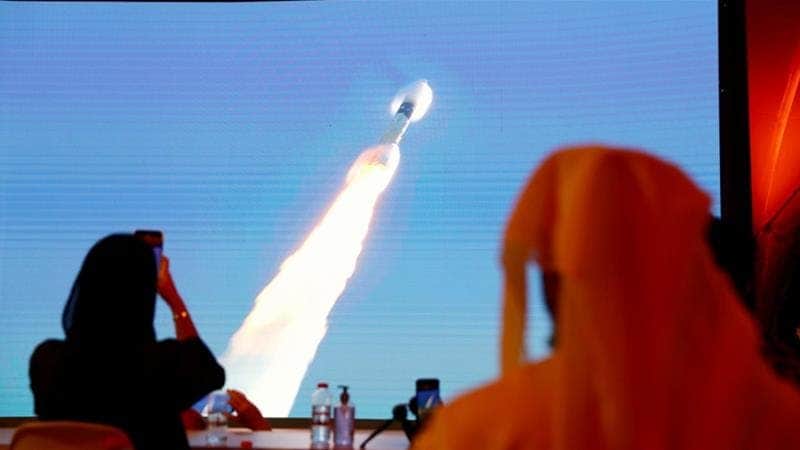Following a successful lift-off in Japan, the United Arab Emirates (UAE) launched its Mars-bound Hope Probe. Hope is now on a journey to study the planet’s weather and climate.
This is the first interplanetary mission of the Arab world and the first out of three to the Red Planet this summer.

Six years ago, the UAE didn’t have a space program
The probe was launched from the Tanegashima Space Center in Japan after a delay last week due to bad weather. The rocket booster successfully separated from the launch vehicle, as planned and the probe established two-way communication with the ground center in Dubai. The probe is expected to reach Mars by February 2021, where it will stay in orbit for one Martian year (687 Earth-days).
This will be the first time for the UAE to orbit on Mars. The official Hope Mars Mission account wrote on Twitter that the probe is “the culmination of every single step that humans have taken throughout history to explore the unknown depths of space.”
We have lift-off. H2A, the rocket carrying the Hope Probe to space, has launched from the Tanegashima Space Centre in Japan.#HopeMarsMission pic.twitter.com/pRKZLOL7NT
— Hope Mars Mission (@HopeMarsMission) July 19, 2020
Mars is about to get a little bit crowded, as the United States and China will also carry their own Mars missions this summer. China’s Tianwen 1 and NASA’s Perseverance Rover are expected to launch sometime between late July and early August. With the UAE, the three countries are launching soon as it agrees with the period in which the Earth and Mars are closest together.
“It was an anchor for an entire generation that stimulated everyone that watched it to push further and to dream bigger,” Her Excellency Sarah Al Amiri, the science lead on Hope, told BBC News. “Today I am really glad that the children in the Emirates will wake up on the morning of the 20th of July having an anchor project of their own, having a new reality, having new possibilities, allowing them to further contribute and to create a larger impact on the world.”
A growing space sector
This isn’t the first time the UAE launches a shuttle, with past experiences in 2009 and 2013. But back then the satellites were developed by its ally South Korea. The country created its own space agency in 2014 and has set ambitious goals such as having a colony on Mars by 2117.
For the government, the space program is a catalyst for UAE’s growing STEM (science, technology, engineering and math) sector. The project for a Mars probe was carried out in just six years, while most missions from other countries have taken between ten and twelve years to develop.
The country partnered with a team at the University of Colorado Boulder’s Laboratory for Atmospheric and Space Physics in the US to build the spacecraft. They also consulted with the Mars Exploration Program Analysis Group (MEPAG), a forum created by NASA to plan explorations of Mars, for the science objective of the mission.
Finally, they decided to use the probe to create the first full picture of Mars’ climate throughout the year. “The data gathered by the probe will add a new dimension to the human knowledge,” said Dubai’s ruler, Sheikh Mohammed bin Rashid Al Maktoum, on Twitter. “This is our latest contribution to the world.”

The study of Mars’ weather system will help to understand how the planet, which used to have similar features like the Earth, went from having rivers and lakes to having no water on the surface. To get answers, the probe will take diverse measurements that will help to explore different theories.
The satellite carries three scientific instruments mounted on one side of the spacecraft. The Emirates eXploration Imager (EXI) is a high resolution multiband (visible and UV) camera, the Emirates Mars Ultraviolet Spectrometer (EMUS), a far-UV imaging spectrograph, and the Emirates Mars InfraRed Spectrometer (EMIRS), and FTIR scanning spectrometer.


